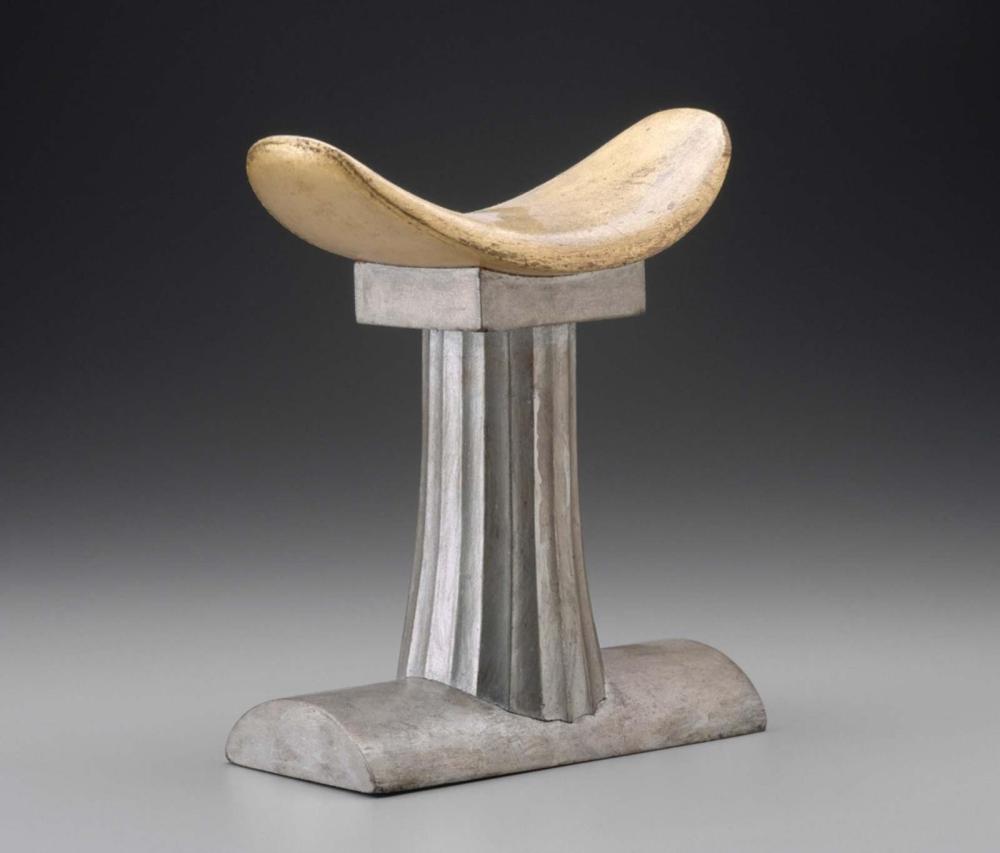Advanced Search
Headrest of Queen Hetepheres I (reproduction)
Maker: William Arnold Stewart (English, 1882 – 1953)
Egyptian
Old Kingdom, Dynasty 4, reign of Snefru to Khufu
2575–2528 B.C.
Findspot: Egypt, Giza, Tomb G 7000 X (original)
Medium/Technique
Wood, silver, gold
Dimensions
Height x width x depth: 20.5 x 17.2 x 7.8 cm (8 1/16 x 6 3/4 x 3 1/16 in.)
Credit Line
Harvard University—Boston Museum of Fine Arts Expedition
Accession Number29.1859
OUT ON LOAN
On display at Houston Museum of Natural Science, TX, May 17, 2013 – March 31, 2027
On display at Houston Museum of Natural Science, TX, May 17, 2013 – March 31, 2027
CollectionsAncient Egypt, Nubia and the Near East
ClassificationsReproductions
DescriptionThose who could afford it equipped their tombs with all the necessities and comforts of life on earth, so that they could continue to enjoy them in the afterlife. For Queen Hetepheres, wife of King Sneferu and mother of King Khufu, these necessities included her entire bedroom suite: her portable canopy, bed with headrest, armchair, and curtain box, all designed of wood overlaid with gold.
On her bed, which was a mere 177 centimeters (5 feet 9 inches) long, the queen would have slept on her side with her cheek resting on the headrest.
All of the furniture is noteworthy for its austerity of line and selective use of detail. The seeming simplicity masks sophisticated joinery. The beauty and technical achievement of these objects are matched only by the amazing story of their accidental discovery in 1925 and subsequent excavation and restoration. Because it was an unplundered royal tomb, the original contents remained in Cairo, as stipulated in the Expedition contract. The set in the Museum is an exact duplicate.
On her bed, which was a mere 177 centimeters (5 feet 9 inches) long, the queen would have slept on her side with her cheek resting on the headrest.
All of the furniture is noteworthy for its austerity of line and selective use of detail. The seeming simplicity masks sophisticated joinery. The beauty and technical achievement of these objects are matched only by the amazing story of their accidental discovery in 1925 and subsequent excavation and restoration. Because it was an unplundered royal tomb, the original contents remained in Cairo, as stipulated in the Expedition contract. The set in the Museum is an exact duplicate.
ProvenanceFrom Giza, tomb G 7000 X (original). Reproduction commissioned for the MFA and made by Boston cabinetmaker Jospeh Gerte, 1929.
(Accession Date: January 1, 1929)
(Accession Date: January 1, 1929)




